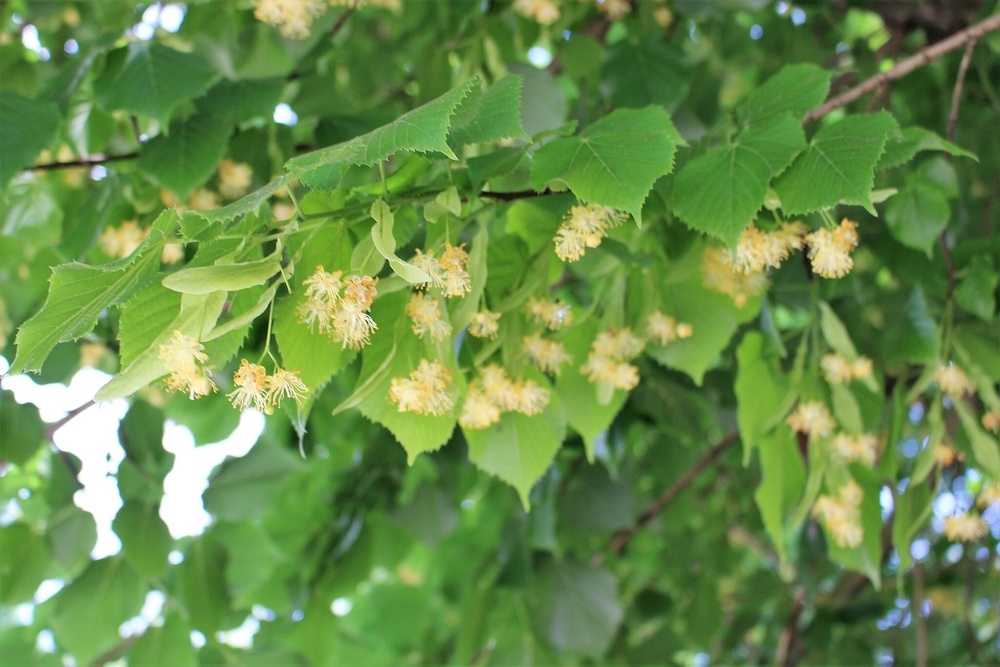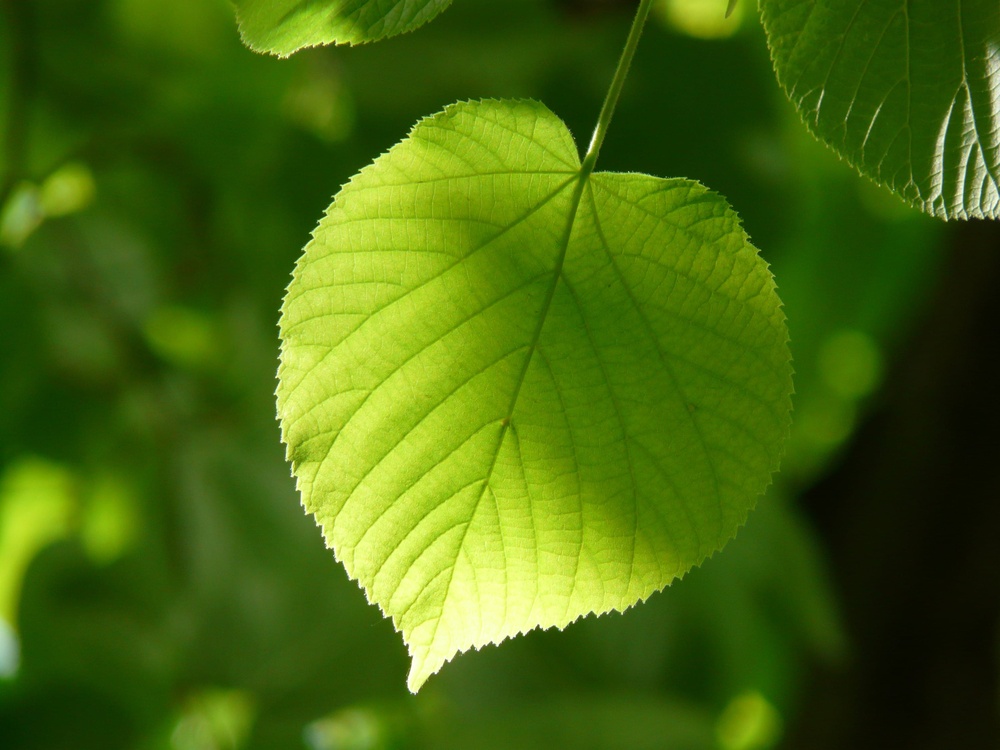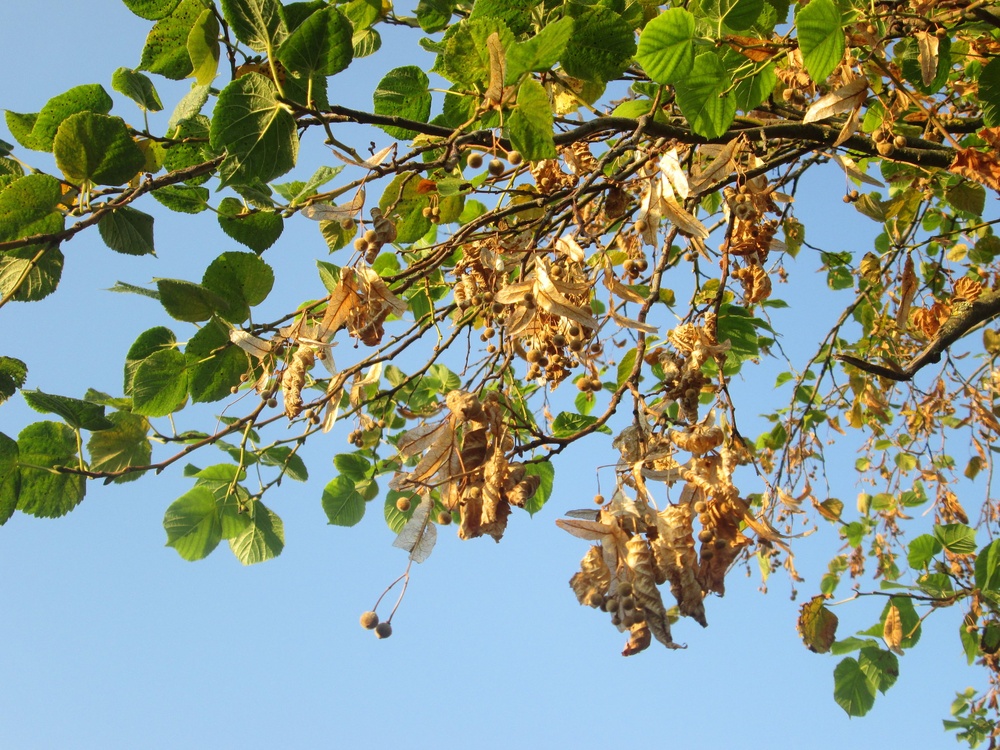Tilia cordata
Winterlinde / Linden
Malvaceae (Kaasjeskruidfamilie)
Edible plant part (2)
Flowers,
leaves
Read 'form of consumption' for safe preparation methods
Toxic plant part (1)
None
Linden belongs to the canopy layer in the food forest. In the process of ecological succession it is a late species. The growth rate is slow. Fully grown the plant has an average height of 8 to 30 meter. and a width of 6 to 15 meter.
The foliage (or leaf cover) is dense. The Linden is decidious. It buds in april and it loses its leaves in november.
This species forms a deep root system. This species is slightly spreading in the food forest.
 foto: Emőke Dénes, https://commons.wikimedia.org/wiki/File:Malvales_-_Tilia_cordata_-_5.jpg
foto: Emőke Dénes, https://commons.wikimedia.org/wiki/File:Malvales_-_Tilia_cordata_-_5.jpg
 foto: Emőke Dénes, https://commons.wikimedia.org/wiki/File:Malvales_-_Tilia_cordata_-_5.jpg
foto: Emőke Dénes, https://commons.wikimedia.org/wiki/File:Malvales_-_Tilia_cordata_-_5.jpg
 https://i1.pickpik.com/photos/512/377/242/leaf-individually-linde-lipovina-f6f8ae9719de15a22da2f8f31447737e.jpg
https://i1.pickpik.com/photos/512/377/242/leaf-individually-linde-lipovina-f6f8ae9719de15a22da2f8f31447737e.jpg
 foto: Andreas Rockstein, https://www.flickr.com/photos/74738817@N07/44355371605
foto: Andreas Rockstein, https://www.flickr.com/photos/74738817@N07/44355371605
Growth factors
- Frost (whole plant)
-
very strong frostcold frostmild frostlight frostno frost
- Frost (flowers)
-
very strong frostcold frostmild frostlight frostno frost
- Light
-
full sunlight shadehalf shadefairly deep shadedeep shade
- Wind
-
strong sea windstrong windsome windshelteredvery sheltered
- Soil texture
-
sandloamlight clayheavy claypeat
- Soil moisture
-
inundationwetmoistdrydrought
- Groundwater level
-
very lowlowmediumhighvery high
- Soil acidity
-
very acidacidneutralalkalinevery alkaline
- Soil fertility
-
very richrichaveragepoorvery poor
Flowering and pollination
- Flowering period (peak)
- early june, mid june, end of june
- Flowering period (length)
- several weeks
- Pollination vector
- insects
- Plant reproductive fertility
- self-fertile (sf)
Life Span and Plant Health
Disease susceptibility
very resistantMain serious pests and diseases
none applicableHarvest and Consumption
Flowers
Leaves
- Harvest location edible part
- High, but within reach
- Harvesting period - uniformity
- Low
- Suitable harvesting methods
- Hand
- Natural storability
- Day
- Suitable markets
- Niche
- Productive life span - start (year) - minimum
- 3
- Productive life span - peak (year) - minimum
- 10
- Productive life span - end (year) - maximum
- 500
- Harvest location edible part
- High, but within reach
- Harvesting period - start
- Early may, mid may, end of may, early june, mid june, end of june
- Harvesting period - length
- Several months
- Harvesting period - uniformity
- Low
- Suitable harvesting methods
- Hand
- Form of consumption
- Fresh
- Natural storability
- Day
- Suitable markets
- Niche
- Productive life span - start (year) - minimum
- 3
- Productive life span - peak (year) - minimum
- 10
- Productive life span - end (year) - maximum
- 500









































